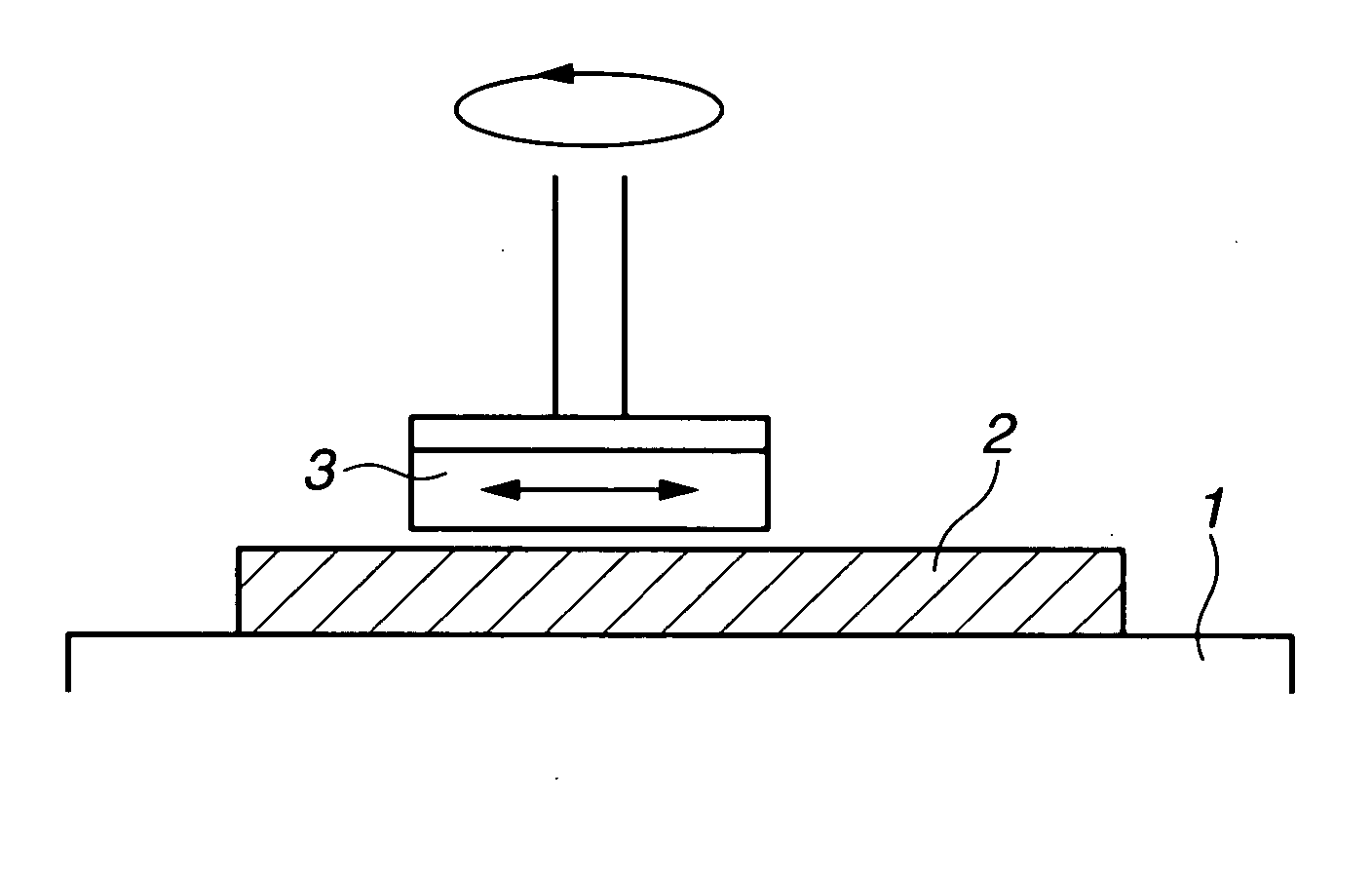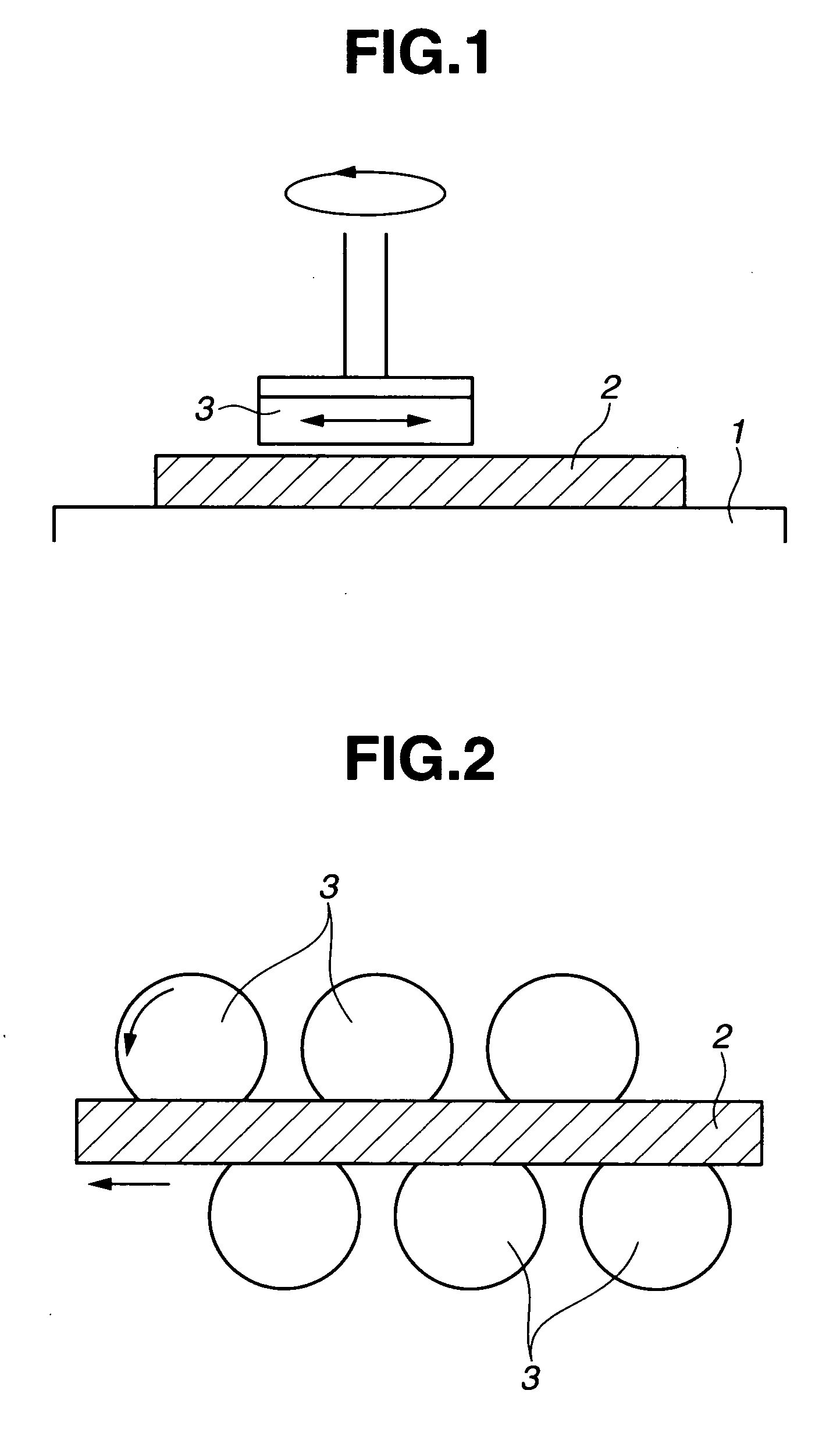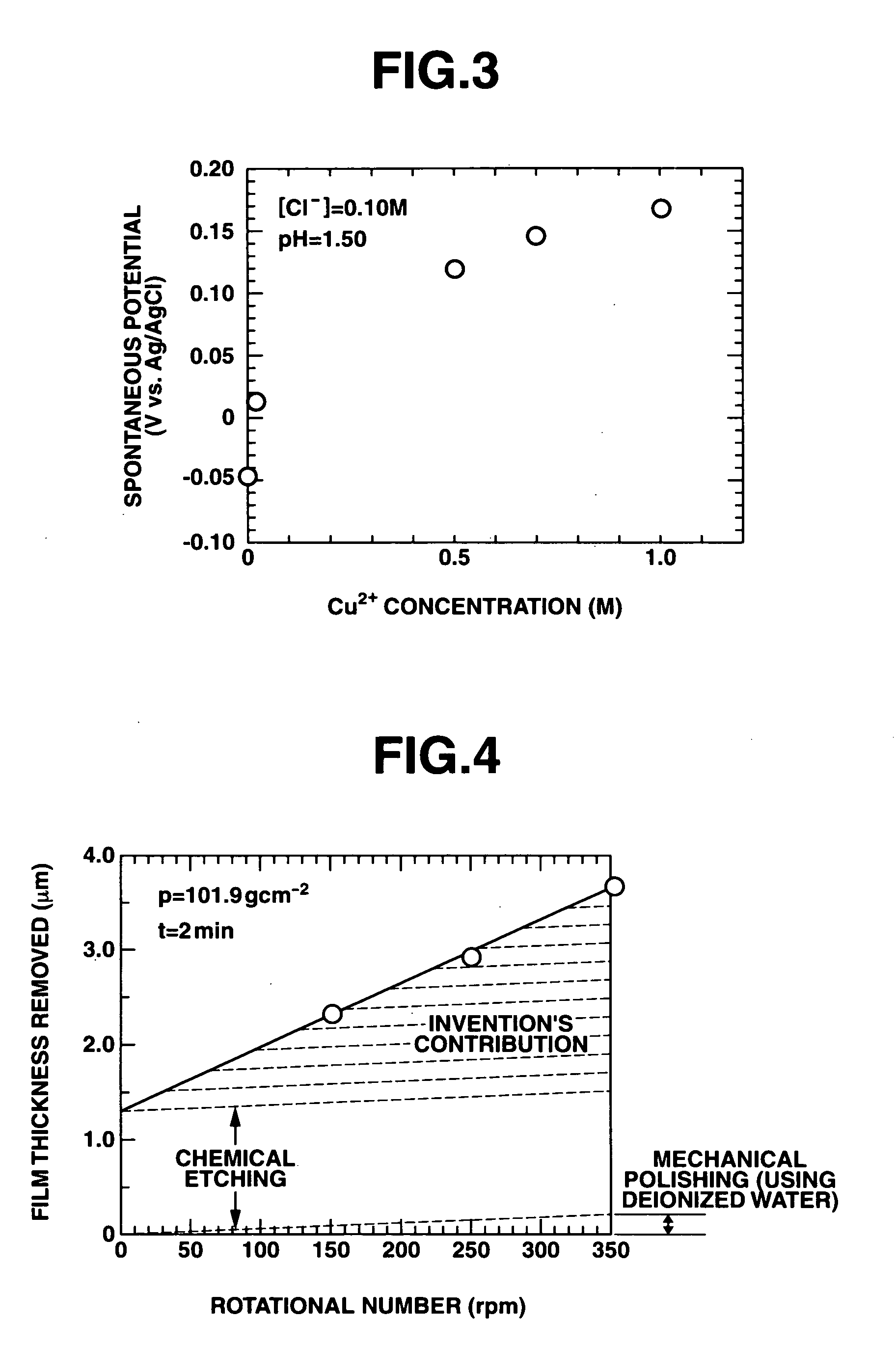Polishing solution and method of polishing nonferrous metal materials
- Summary
- Abstract
- Description
- Claims
- Application Information
AI Technical Summary
Benefits of technology
Problems solved by technology
Method used
Image
Examples
example 1
[0058] 0.1 M copper (II) sulfate, 0.05 M copper (I) chloride and 0.05 M sodium chloride were dissolved in deionized water to prepare the polishing solution containing 0.15 M copper ions and 0.15 M chloride ions, respectively, at Cu / Cl molar ratio of 1. The solution was adjusted to pH 1.5 with sulfuric acid, which denotes Polishing solution A. Al2O3 (alpha-conversion 98%, averaged particle diameter of 0.1 μm) of 40 parts was mixed with deionized water of 60 parts, and the mixture was adjusted to pH 1.5. The Al2O3 was dispersed into the mixture with Disper at 1,200 rpm for 1 h to prepare the slurry paste. The Polishing solution A of 66.7 parts was mixed with the slurry paste of 33.3 parts to form a polishing solution. Consequently, the prepared polishing solution, denoting Solution 1, has slurry concentration of 13.3% and Cu / Cl molar ratio of 1. The Polishing solution A of 66.7 parts was mixed with deionized water (adjusted to pH 1.5) of 33.3 parts to provide anther solution (Solution...
example 2
[0060] Using copper (II) sulfate and sodium chloride, Solution 2-1 to 2-4 were prepared, which had copper and chloride ionic concentrations shown in Table 2. Imidazole was added as a corrosion inhibitor. Furthermore, using copper (II) sulfate and sodium chloride, Solution 2-5 to 2-7 were prepared, as shown in Table 2. Sample 2-8 was only deionized water. Those solution pHs were adjusted with sulfuric acid. The solutions were used to polish copper plates. The polishing machine which was equipped with abrasives-supported nylon nonwoven fabric pad was used. The apparatus was operated under conditions as follows: polishing time 2 min, polishing pressure 100 g / cm2, rotational number 250 rpm, and temperature 35° C. The polishing solutions had dissolved oxygen concentration of 10 mg / L. Such polishing conditions gave Re=95,000 and Sh(Sc)1 / 3=about 350. From the results of Solution 2-1 to 2-4, the removal rate of 1 μm / min or more was obtained, and the polished precision after the CMP is satis...
example 3
[0061] Polishing solutions at different copper concentrations were prepared, using copper (II) sulfate and potassium chloride. Rest potential was measured in those solutions (FIG. 3). In Cu / Cl molar ratio range shown in Example 2, the rest potential was stable in the presence of copper ions. The results obtained from the chemical mechanical polishing process exhibited constant removal rate corresponding to the molar ratio.
PUM
| Property | Measurement | Unit |
|---|---|---|
| Acidity | aaaaa | aaaaa |
| Angular velocity | aaaaa | aaaaa |
| Thickness | aaaaa | aaaaa |
Abstract
Description
Claims
Application Information
 Login to View More
Login to View More - R&D
- Intellectual Property
- Life Sciences
- Materials
- Tech Scout
- Unparalleled Data Quality
- Higher Quality Content
- 60% Fewer Hallucinations
Browse by: Latest US Patents, China's latest patents, Technical Efficacy Thesaurus, Application Domain, Technology Topic, Popular Technical Reports.
© 2025 PatSnap. All rights reserved.Legal|Privacy policy|Modern Slavery Act Transparency Statement|Sitemap|About US| Contact US: help@patsnap.com



